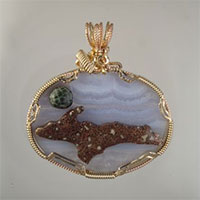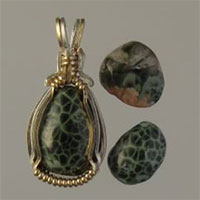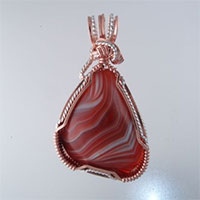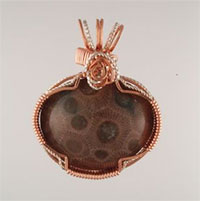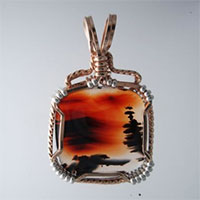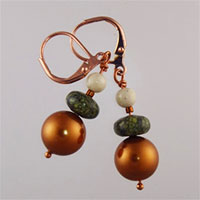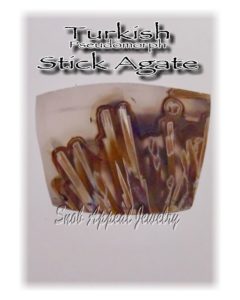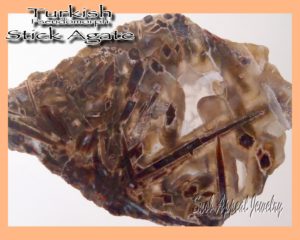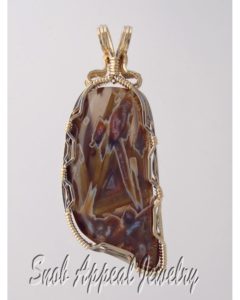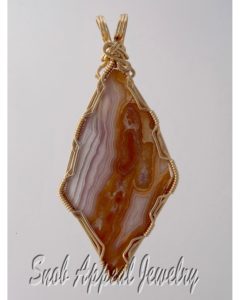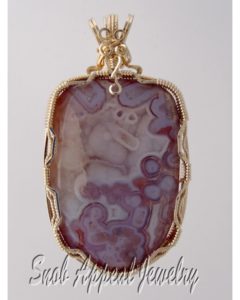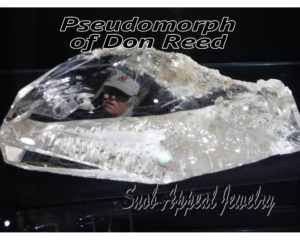Turkish Stick Agate is an interesting pseudomorph agate, from Turkey with a variety of intriguing patterns and colors. The Turkish Stick Agates come in different types. A distinguishing characteristic of Turkish Stick Agates is needle-like tubes, forming what looks like pointy, sharp sticks within the stone, so it can be referred to as Needle Agate.
Experienced rock collectors will have in their mind what a certain agate looks like or what represents a body of agates with that name. When I say Lake Superior Agate for most people a red and white banded agate might appear in their mind, but we know that there are many types of Lakers.
When we say Stick Agate you might expect needlelike structures in a clear quartz agate, but there are many types of Turkish Stick Agate even from the same mines. I thought you would enjoy seeing these samples which are quite different. You can see another very nice piece at mindat.org.
Just a little aside folks.This brings up an important question; Can you poke your eye out with a Stick Agate? My mother had four boys and unlike kids today, we played OUTSIDE a lot. It was not uncommon for her to yell at us for doing dumb things. ” Don’t run with that stick; you could poke your eye out”. As I have grown up (maybe) I came to realize it was impossible to “poke your eye out” while running with a stick. You can only poke your eye IN. The only way you can poke your eye OUT is to stick the stick up your nose and then you could theoretically “poke your eye out”. Now back to our regular program…
High quality Turkish Stick Agate is quite expensive in the rough, and every time I’ve tried to get a break on it, Turkish miners, at the Tucson shows, decline to give much, claiming how difficult it is to find and mine. Much of this material comes from mines near Ankara, Turkey. Actually the good stuff comes from Cubuk, Turkey; but who knows where Cubuk is? (Central Turkey: I looked on a map)
Quality depends on how solid a particular Stick Agate is. Most Turkish Stick Agate has geodes with gaps, or vugs, and also can vary in hardness within a stone.
I find it intriguing that such variety can come from the one source. I am not an expert on Turkish Stick Agate, but I do know it is very beautiful. I guess that’s why I make jewelry from it.
I lied; When I did a search on Turkish Stick Agate, I came up as one of the experts. This has often happen. Bonnie (wife) says it’s because I’ve written so many blogs over the past 10 years. I guess I could say I’m a pseudomorph of knowledge on many subjects.
This agate has only become known in the United States within the last 20 years, and is not commonly available. Usually there is a Youtube video on everything, but there seems to be no video of actual mining Turkish Stick Agate.
In this blog I show three pieces of jewelry I made from expensive rough I bought a couple years ago in Tucson from the Non-negotiable (price) dealer.
Can you poke your eye out with a Turkish Stick Agate? Like a stick, the answer is probably “NO”, unless you take a small, sharp shard and shove it way up your nose. If you ever try this experiment, make sure your camera is recording it. I’m betting you could go viral; until Youtube pulls it off.
*pseudomorph
If this craziness is of interest to you, you should also read our embarrassing story about a missing chunk of this Turkish Stick Agate.
Visit our Turkish Stick Agate jewelry page for currently available pieces.


